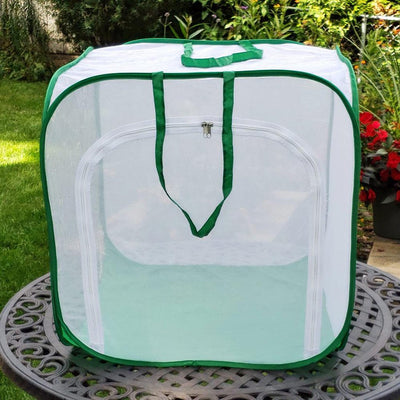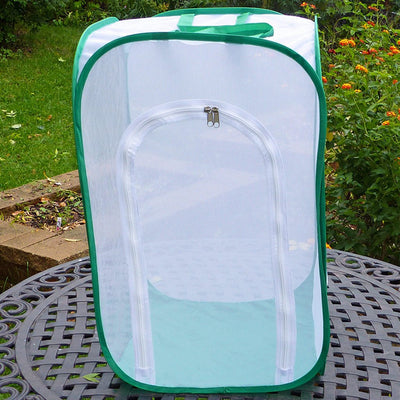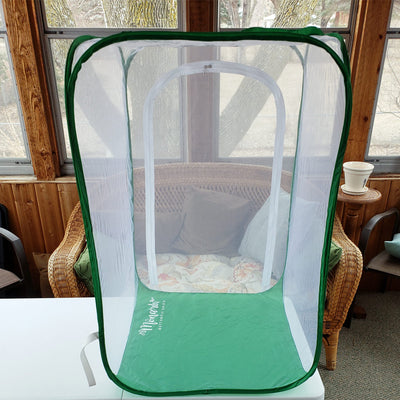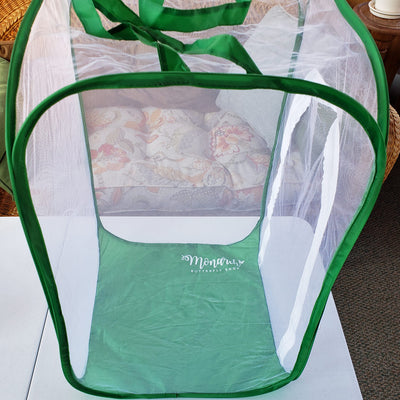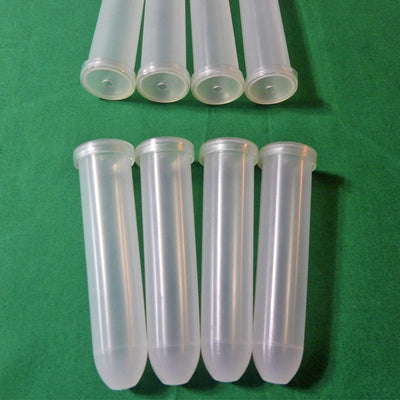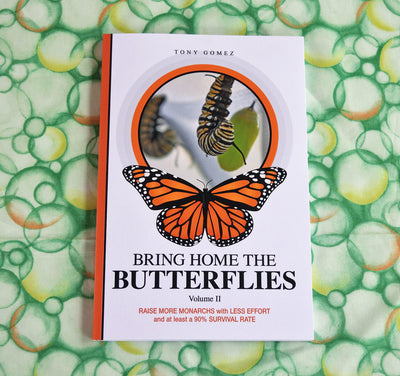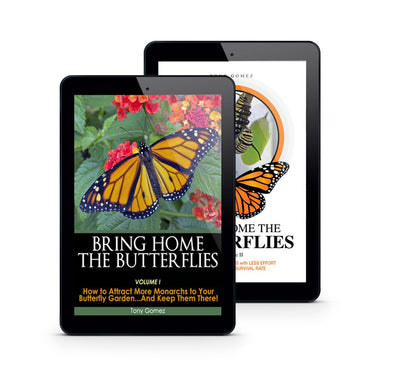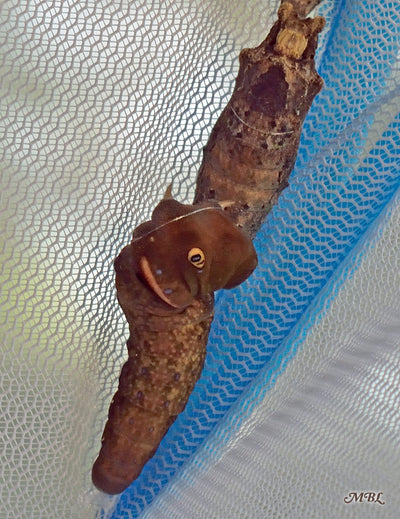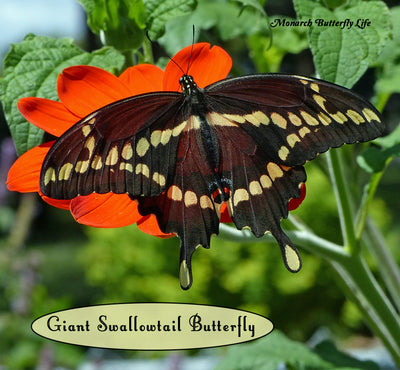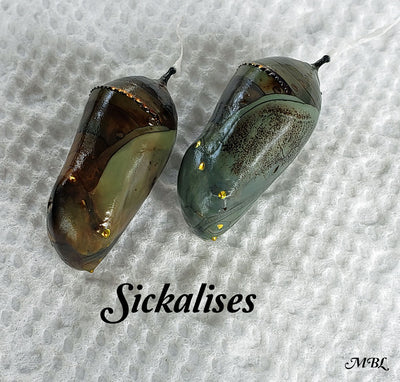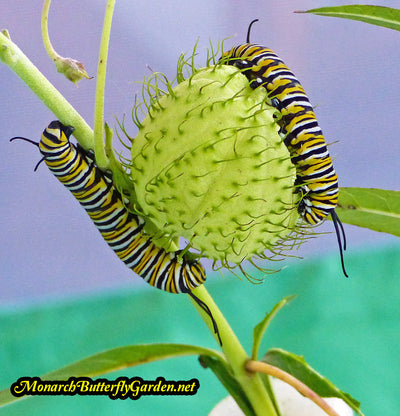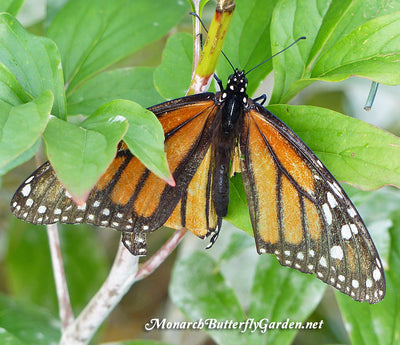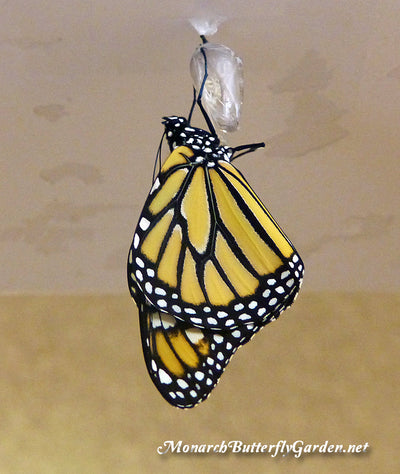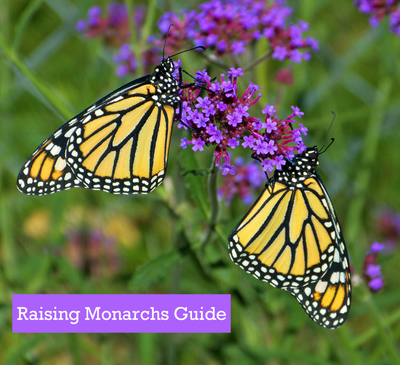Raising Butterflies Blog
Butterfly Birth…a New Monarch Emerges from its Chrysalis!

Monarch Metamorphosis: The Final Chapter
9-14 days after your monarch forms a chrysalis it will become transparent, revealing the magnificent butterfly inside. Once it’s completely transparent, you know it will emerge that day. The most common question I get at this point is: How can I tell when the butterfly is about to come out?
The answer? Go to the bathroom for 5 minutes, and come back to a newly emerged butterfly. 😉 That’s the way it seems to go for many…
However, there is a way to indicate that you should hold off on that quick trip to the loo…
Look at the top of the chrysalis where the butterfly abdomen is located. When the chrysalis pleats start to expand and separate like an old slinky, the butterfly is about to eclose (emerge) from the chrysalis…or at least within the hour.
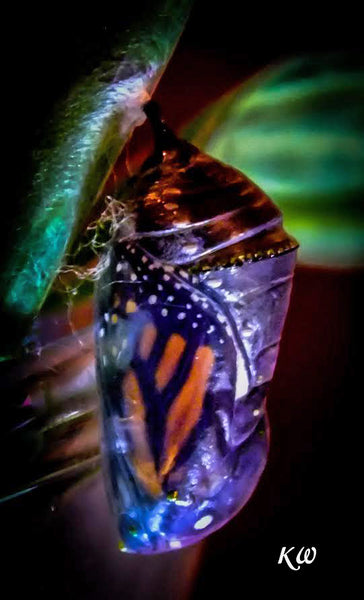
Did You Know? If you raise monarchs in cool temperatures or in a dark room, they’ll often hatch later in the day…and days later!
Seconds after the butterfly emerges it will look nothing like the majestic monarchs you’ve seen fluttering through your garden. Its wings will be small and crumpled, and its abdomen will be plump and filled with fluids:
Did You Know? The correct terminology to describe a monarch emerging from its chrysalis is eclose, while the term hatch should only be used to describe caterpillars emerging butterfly eggs.
A freshly-eclosed butterfly uses mouthparts called labial palps to fuse together the proboscis (straw-like appendage used to take in nectar) from two thin pieces into one super straw. The butterfly will unroll its proboscis and pat it together between the two palps…
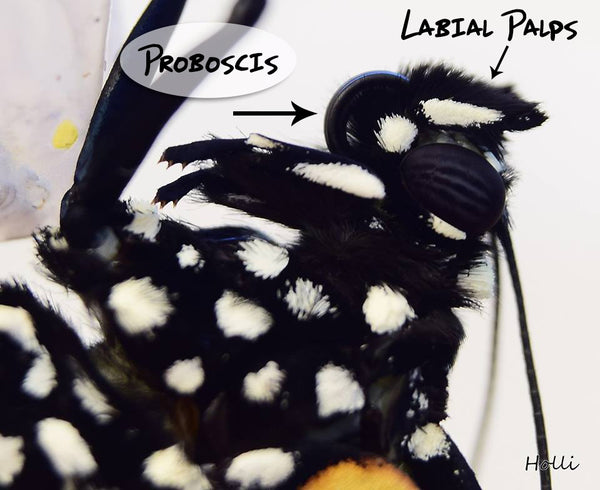
Over the course of the next minutes, hemolymph from the abdomen will be pumped through the wings, until your butterfly starts looking more monarchesque…

About half an hour after a monarch ecloses, it will expel a reddish fluid (through its anal opening) called meconium. This is metabolic waste built up while inside the chrysalis and its expulsion is a normal occurrence to successfully complete metamorphosis.
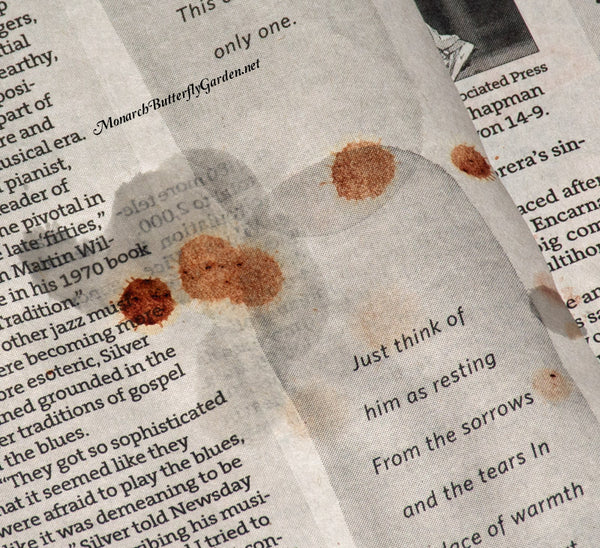
Although meconium release is a normal part of a monarch butterfly birth, these other occurrences are not…
Potential Issues?
Newly emerged butterflies must be able to hang down so their wings can expand and dry properly. If they don’t have room to do this, wrinkled and deformed wings will keep them grounded for life. 😟
If a butterfly falls from its chrysalis and is not immediately placed back up to hang down, its wings will be deformed and it will never fly.
If a butterfly is permanently unable to fly (but healthy otherwise) it can be kept as a pet, left outside to support the ecosystem, or euthanized.
Euthanize by placing the butterfly inside a paper towel and squeezing or place the butterfly inside a plastic baggie and put in your freezer for at least 48 hours.
If you choose to keep a flightless butterfly, check out this info on feeding adult butterflies.
If a butterfly falls from its chrysalis and is too weak to hang on after being placed back up, it is probably heavily infected with OE parasites and should be euthanized to avoid spreading parasites to future generations of monarchs.
If a butterfly is unable to emerge from its chrysalis, OE is again the likely issue. If a chrysalis is transparent for more than 72 hours, the butterfly is either deceased or very sick. You can euthanize using the same methods listed above.
If your butterfly is able to emerge and dry its wings properly, your final step is on the horizon…safely releasing your butterflies so that they can lay the foundation for future monarch generations.
For further on butterfly birth and raising healthy monarchs, a ✬✬✬✬✬ customer-rated book on How To Raise More Monarchs, with Less Effort is available for purchase HERE <<< (choose paperback or PDF download)

